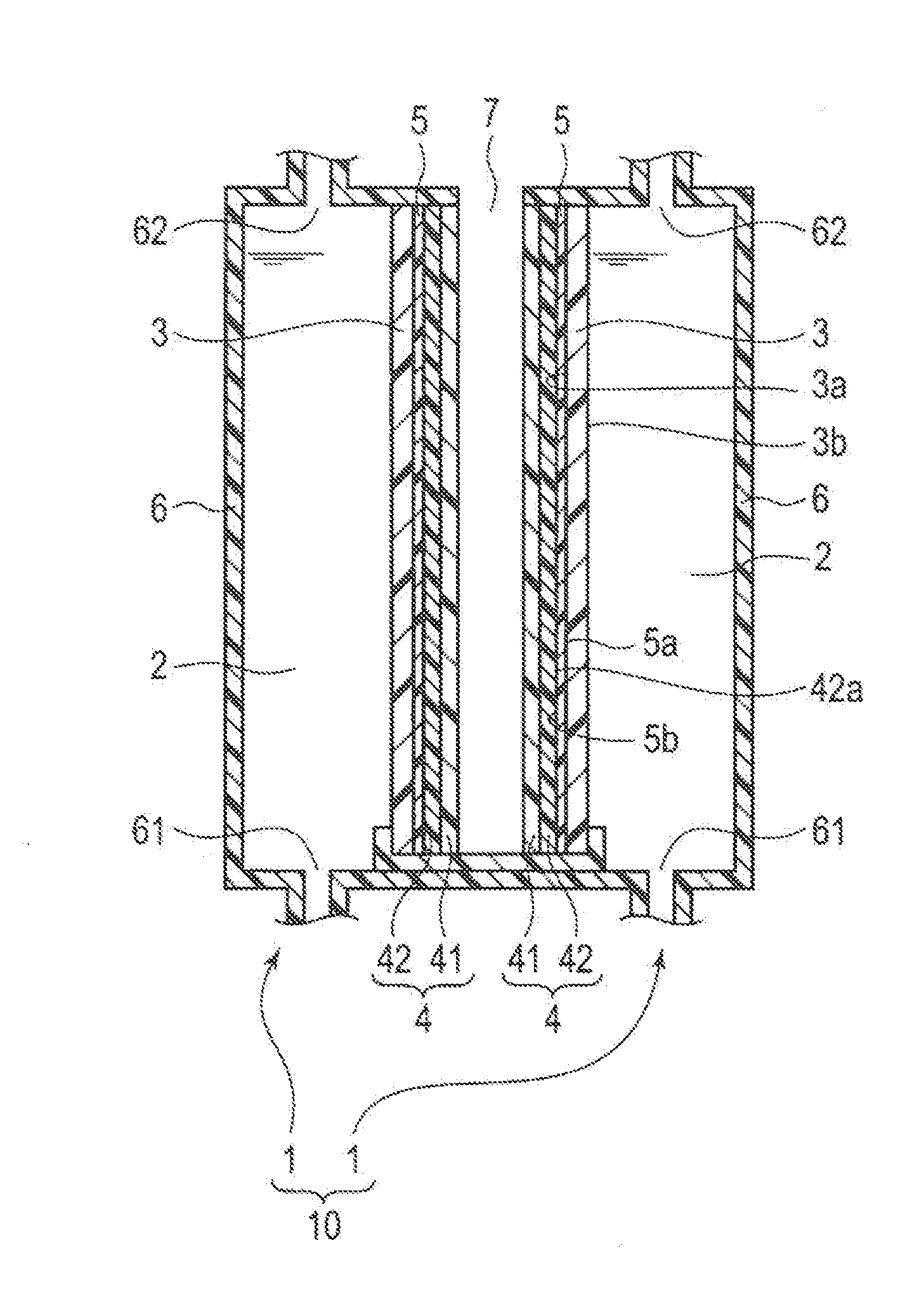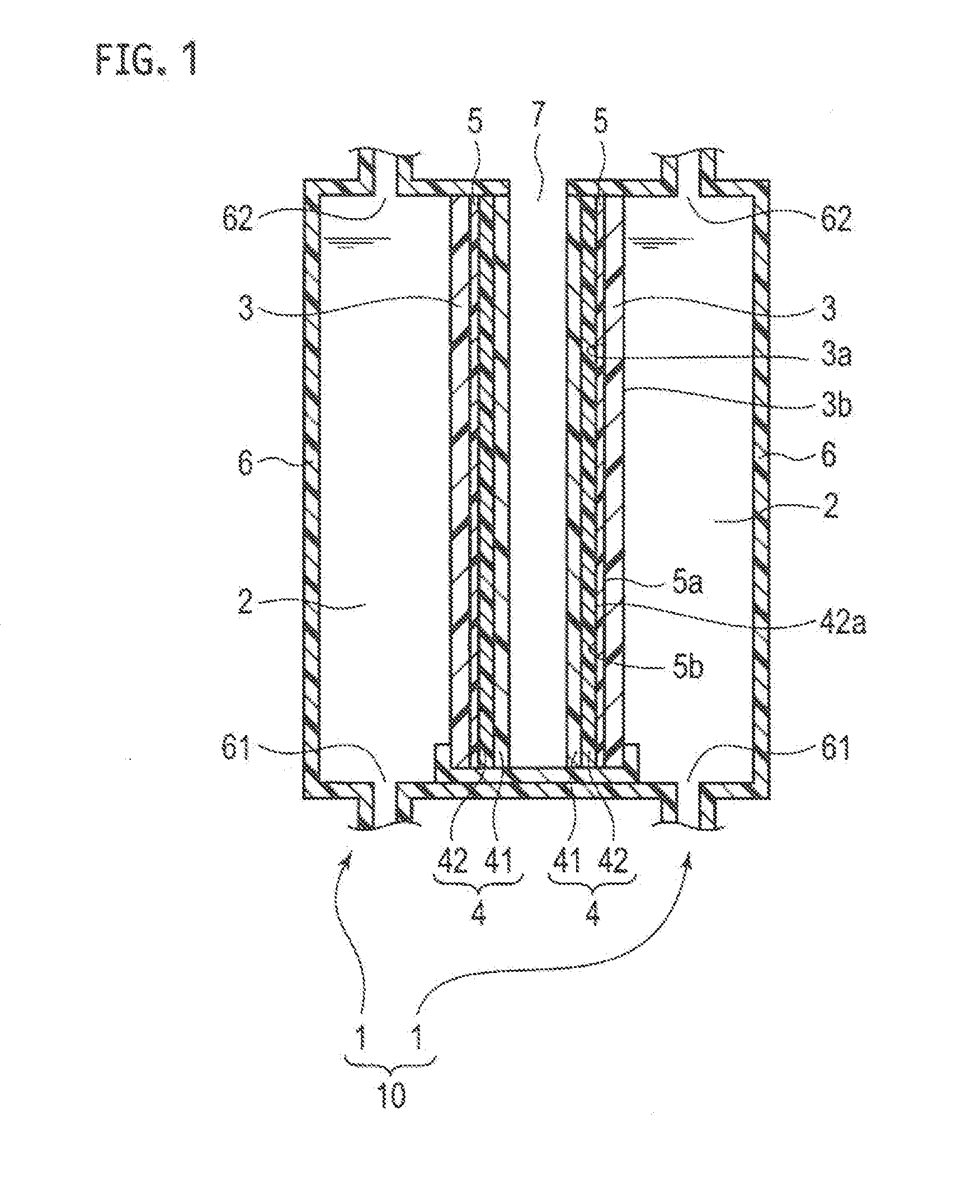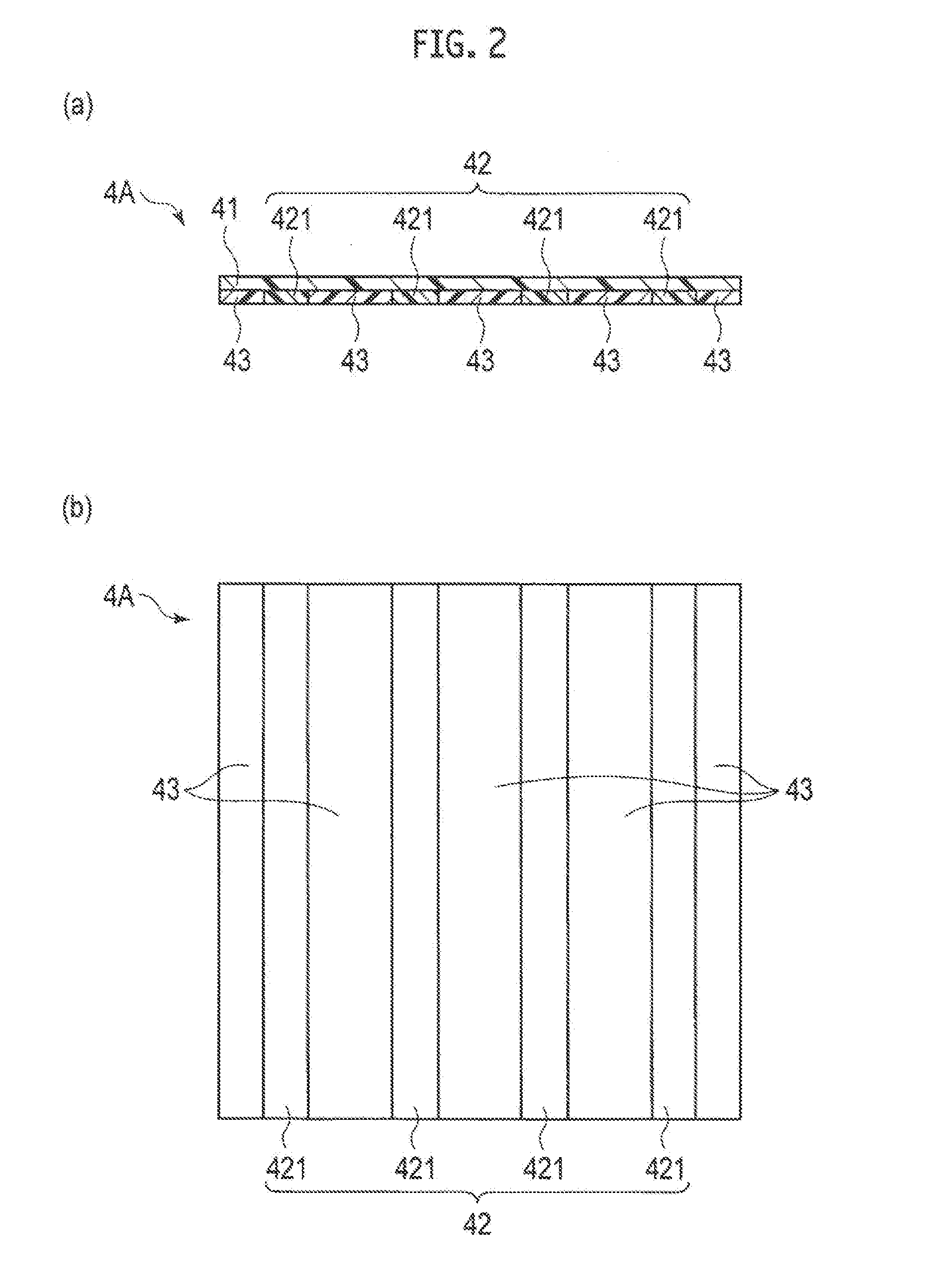Microbial fuel cell, microbial fuel cell system, and method for using microbial fuel cell
a fuel cell and microbial technology, applied in the field of microbial fuel cells, can solve the problems of imbalance between the performance of the negative electrode and the positive electrode, the inability to recognize the problem derived from the imbalance, and the insufficient enhancement of the electrochemical reaction efficiency. , to achieve the effect of significantly high electrochemical reaction efficiency and insufficient enhancement of the electrochemical reaction efficiency
- Summary
- Abstract
- Description
- Claims
- Application Information
AI Technical Summary
Benefits of technology
Problems solved by technology
Method used
Image
Examples
first embodiment
[0018]As shown in FIG. 1, a microbial fuel cell 1 according to the present embodiment includes an electrolysis solution 2, a negative electrode 3, a positive electrode 4, and a separating membrane 5. The electrolysis solution 2 includes organic matter. The negative electrode 3 holds anaerobic microorganisms and is in contact with the electrolysis solution 2. The positive electrode 4 is a gas diffusion electrode including a water-repellent layer 41 and a gas diffusion layer 42 placed on the water-repellent layer 41.
[0019]A ratio of the area of the negative electrode 3 in a direction vertical to the stacking direction of the negative electrode 3, the positive electrode 4, and the separating membrane 5 (in a plane direction) to the area of the gas diffusion layer 42 in the plane direction ([area of negative electrode] / [area of gas diffusion layer]), is defined as T1. A ratio of a maximum current density of the positive electrode 4 at an electric potential of the positive electrode 4 in...
second embodiment
[0077]A microbial fuel cell 1A and a microbial fuel cell system 10A according to a second embodiment will be described below with reference to the drawings. The same elements as those in the first embodiment are designated by the same reference numerals in this embodiment, and overlapping explanations are not repeated below.
[0078]The microbial fuel cell 1A according to the present embodiment is required to satisfy the relationship of T1 and T2 represented by the expression (1), as in the case of the first embodiment. A positive electrode 4B of the present embodiment preferably has a configuration in which the gas diffusion layer 42 is partly placed on the water-repellent layer 41, as in the case of the positive electrode 4A described above.
[0079]As shown in FIG. 3, the gas diffusion layer 42 of the present embodiment is preferably partly provided and located on the upper side of the positive electrode 4B. In particular, the gas diffusion layer 42 partly stacked on the water-repellen...
PUM
| Property | Measurement | Unit |
|---|---|---|
| current density | aaaaa | aaaaa |
| electric potential | aaaaa | aaaaa |
| electrical conductive | aaaaa | aaaaa |
Abstract
Description
Claims
Application Information
 Login to View More
Login to View More - R&D
- Intellectual Property
- Life Sciences
- Materials
- Tech Scout
- Unparalleled Data Quality
- Higher Quality Content
- 60% Fewer Hallucinations
Browse by: Latest US Patents, China's latest patents, Technical Efficacy Thesaurus, Application Domain, Technology Topic, Popular Technical Reports.
© 2025 PatSnap. All rights reserved.Legal|Privacy policy|Modern Slavery Act Transparency Statement|Sitemap|About US| Contact US: help@patsnap.com



